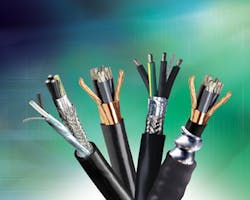VFD Technology: Saving "Green" by Going "Green"
Reducing energy use at water treatment facilities is a proven way for municipalities to save money, decrease carbon emissions, and increase the life of automation machinery and equipment. Currently, municipal water supply and wastewater treatment systems account for about 35% of energy used by municipalities. In fact, water and wastewater treatment and distribution in the U.S. is estimated to consume 50,000 Gigawatt-hours of electricity, costing over $4 billion annually!There are organizations that can perform facility-wide energy audits and recommend a variety of methods to conserve energy and increase energy efficiency. Their energy-saving recommendations range from the relatively simple to more sophisticated. Altering scheduling of equipment usage to off-peak hours, for example, can be helpful. So can choosing to use alternative and/or renewable energy sources where available. Predictive maintenance and on-site monitoring of pumps, pipes and motors can also help increase energy efficiency.However, one often overlooked strategy that has proven both accessible and effective is the implementation of variable frequency drive (VFD) technology at the mission-critical operational and process level. How VFDs Can HelpVFDs – also known as adjustable frequency drives or variable speed drives – regulate the speed of an AC electric motor by controlling the frequency and voltage of the power it delivers to the motor. Allowing the speed and torque of a motor to be varied via electrical rather than mechanical means permits greater efficiency and flexibility of operation. Lacking a VFD system, industrial motors run continuously at full speed. Valves or other mechanical methods are employed to control the machine output. Unfortunately, running a motor at maximum speed, regardless of the varying demands of production, means that a great deal of electric power is wasted, due to the mechanical systems employed. In addition to improving the efficiency of motor power consumption, VFDs also serve to extend the life of the motors, thanks to their “soft-start” capability in which motors are ramped up to speed gradually instead of being abruptly thrown online. This reduces mechanical stresses on the entire motor system, leading to less frequent breakdowns, lower maintenance costs, and longer motor life.Improved process control is another advantage that can be realized by implementing VFD technology. Process throughput typically depends on a range of variables. A motor that can only operate at a constant speed, regardless of those process variables, can result in wasted energy (and wasted dollars). With a VFD system in place, motor speeds can be changed almost instantaneously to adapt to changing process conditions and demand. That’s why VFDs are becoming increasingly popular in the water and wastewater treatment industries where most of the energy usage is drawn from the pumping station and aeration processes. As much as 50-90 percent of the electric power consumed at a typical water treatment plant utilizing fused aeration systems is used to run blower motors. A blower motor fitted with a VFD uses 10 to 20 percent less electricity than traditional equipment – and reduces a pump’s energy usage by as much as 50 percent. When you factor these process improvement percentages into operational expenses, it’s easy to see that the cost savings can be significant.Choosing the Right VFD CablesWhile VFDs provide measurable benefits in water and wastewater operations, they are not without drawbacks. The upfront cost and installation of a VFD system can be steep due to the protection that is required to ensure performance in this difficult environment. However, evidence suggests that the costs can be recouped as early as a few months after installation. In addition, VFDs are subject to voltage spikes, acoustic motor noise, and motor heating that can damage equipment. Voltage spikes, for example, can cause corona discharges to occur within motor windings, causing damage not only to the cabling that supports the equipment, but also to the motors, bearings, drives and related equipment. This damage, in turn, can cause failure of the entire VFD system, resulting in costly production downtime.Choosing the right industrial-grade cabling can overcome these hazards, making VFDs a safe and sensible investment. VFD cables must be especially rugged in order to handle the high degree of humidity, grit and sludge present in water treatment facilities. And, due to the mission-critical nature of the processes involved, all equipment must be as reliable as possible as well.Cable Selection CriteriaA cable should never be the weak link in a VFD system. The cables selected must have the ability to withstand the harshest operating conditions in order to maintain the life of the other system components. That’s why selecting an appropriate VFD cable is so important. By mitigating the harmonics generated by VFDs during operation, the cable can improve overall drive system reliability and longevity. Special attention should be paid to the cable’s insulation type, impedance and shielding/grounding system. Cables employing a heavy wall of thermoset insulation are recommended because of their proven electrical benefits and improved stability. Look for highly protective shielding systems and, in some situations, continuous armoring might also be recommended because of the low impedance path they provide for common-mode noise to return to the drive. When VFD cables are installed in close proximity to low-level communications cables and other susceptible devices, shielded instrumentation cable should be used. It is also prudent to limit the run of a VFD cable parallel to instrumentation cables to 10 ft. or less to reduce the likelihood of radiated noise issues.ConclusionClearly, selecting the right VFD system – and the right cables – is paramount to a successful implementation of variable frequency drive technology. Once accomplished, however, migrating to VFD is an effective investment that can pay off dramatically in terms of reducing energy usage and carbon emissions, and in saving costs and extending the service life of costly capital equipment.

